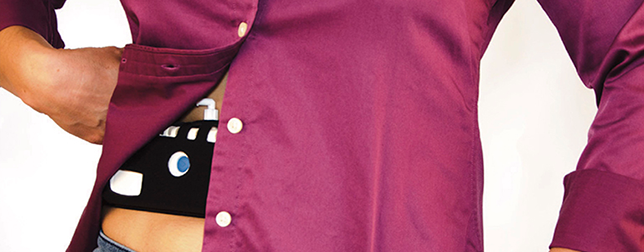Of the more than 750,000 U.S. surgical patients annually, around20 percent experience complicated seromas requiring painful and costly interventions such as aspirations such as which add more than a $1 billion burden to the U.S. healthcare system.
Post-surgical wounds such as following abdominal surgeries and mastectomies, may require manually operated suction drainage to prevent post-operative complications triggered by edema and fluid collections.
For the past few decades, suction bulbs have been commonly used in these cases due to their simplistic design and not needing any external power source. New technologies available today can significantly improve this procedure as batteries are now more powerful, pumps are more efficient and electronics are even tinier.
Read more This “Smart Stent” Can Monitor Blood Flow and Detect Narrowing of Artery
The U.S. Food and Drug Administration (FDA) has gave clearance to SOMAVAC® 100 Sustained Vacuum System, a closed suction drain device. The low-profile, battery-powered wearable device applies sustained vacuum to remove fluid effectively and reduce the risk of seroma. It is the only patient-centric, valuebased alternative to the suction bulbs used in closed suction drains, said the company.
SOMOVAC 100 stays close to the body, so as to not to protrude too much and remains hidden under the clothing. It’s designed to be patient-friendly and does not cause spillage, leakage, and clogging of lines.
“This FDA clearance represents a critical milestone for SOMAVAC and provides a meaningful advancement in post-surgical care, offering patients the opportunity to recover with dignity at home after major surgeries,” in a statement said Esra Roan, PhD, Chief Executive Officer of SOMAVAC Medical Solutions, a Memphis, Tennessee firm. “We are excited about receiving our clearance from the FDA for this device so that our technology can begin to improve patients’ recovery after surgeries.”
SOMOVAC 100 was designed to replace suction bulbs with surgical drains, which has seen little advancements since the bulbs’ conception in 1970’s.
Read more Embracing Artificial Intelligence and Machine Learning in Healthcare
The current standard of care is manually operated closed-suction systems, such as Jackson-Pratt (JP) drains or Hemovacs, whose goal is to draw fluid out with the help of a flexible, suction bulb attached to the end of the drain. Patients wear these surgical drains for anywhere from days to several months depending on the self-reported fluid volume. The suction bulb’s inability to generate continuous suction is a major factor in prolonged drain indwelling times which increases risks of complications. Bulbs also have problems such as leakage, clogging and spillage.
About SOMAVAC 100
SOMAVAC Medical Solutions, Inc., headquartered in Memphis, TN, is a medical device company committed to engineering medical devices that transform healthcare for the benefit of patients. The SOMAVAC® team actively engages and listens to surgeons, patients, caregivers and other healthcare providers to design best-case alternatives to medical devices that enhance patient convenience and compliance.













